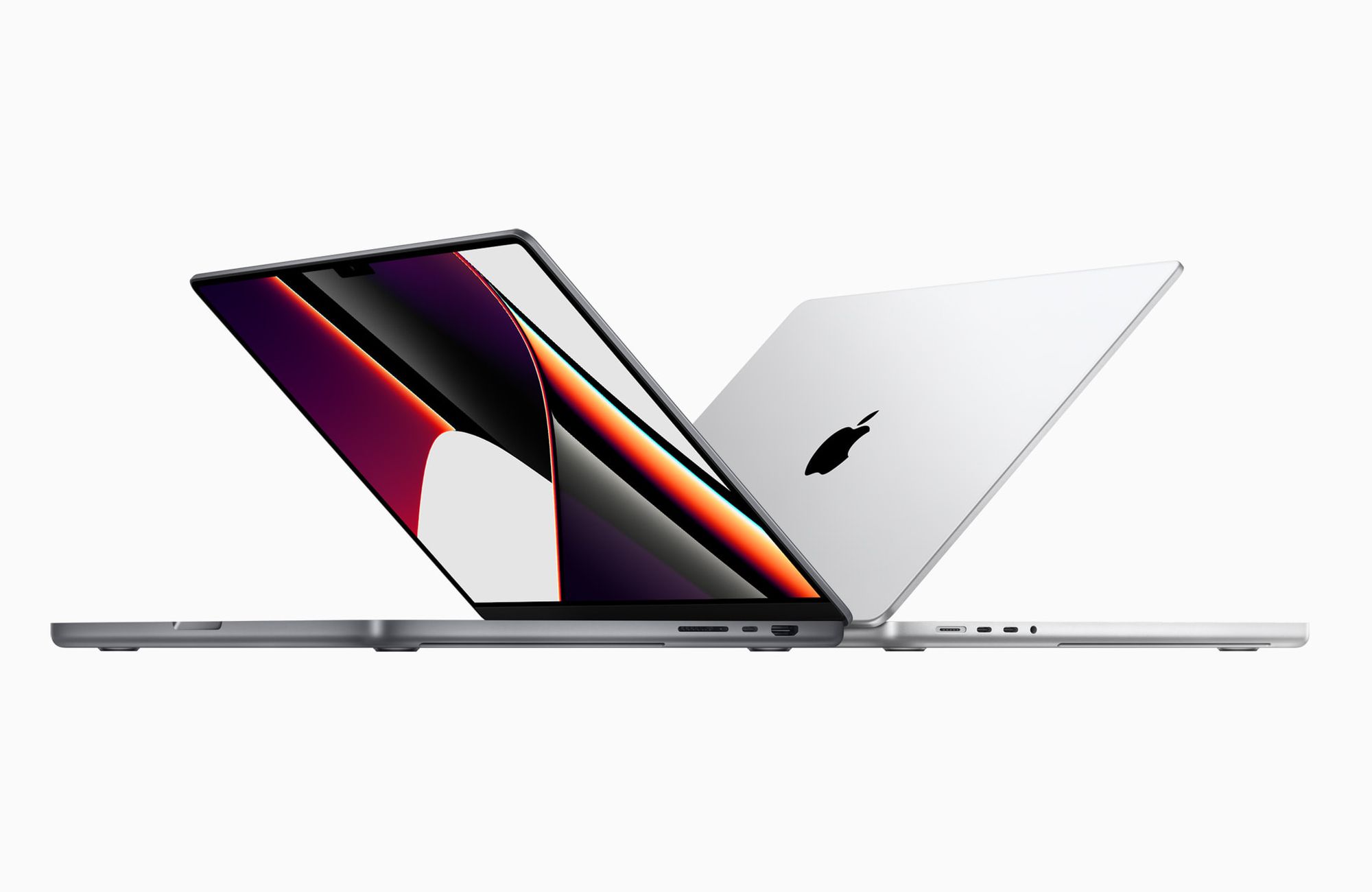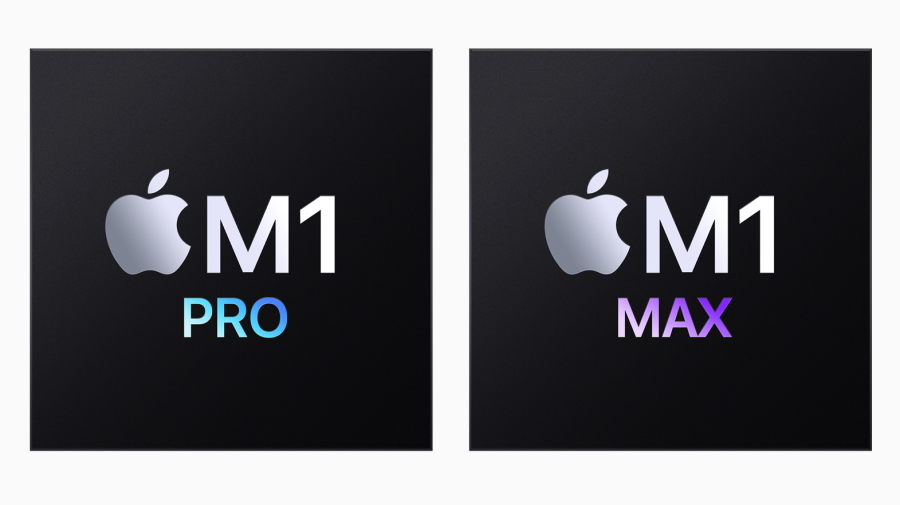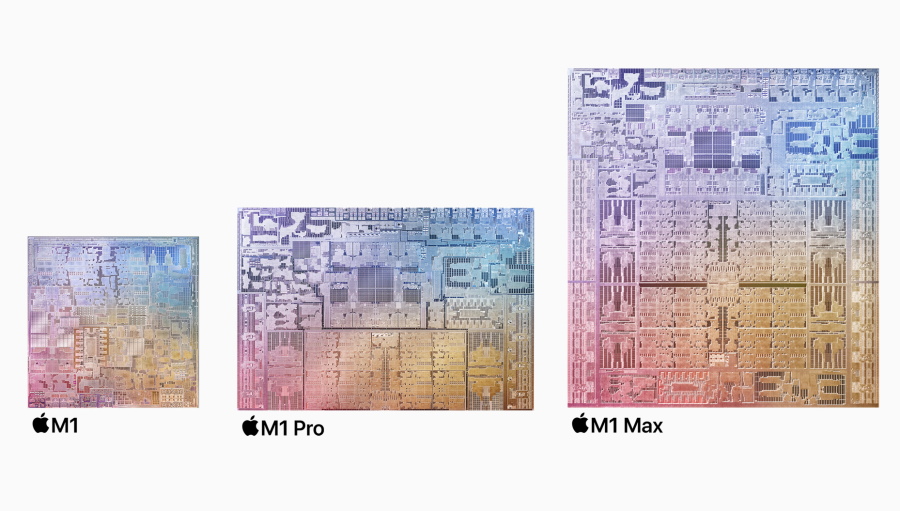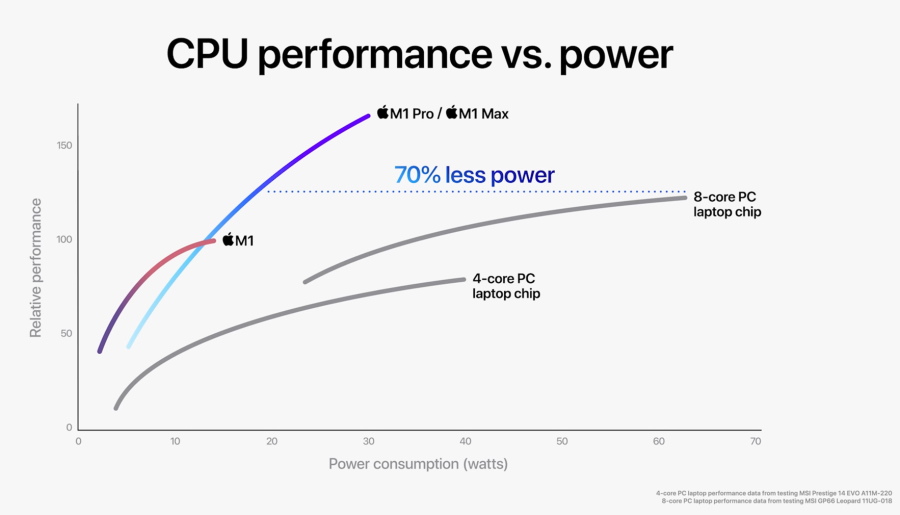Apple held yet another launch event just within a month after it unleashes iPhone 13, iPhone 13 Pro, 6th gen iPad, and 9th gen iPad. At tonight’s Unleashed launch event, the company shifts its attention to two new MacBook Pro models that also marked the debut of two new chips under the M1 family.
Built using 5nm process technology, they come in the form of M1 Pro and M1 Max which features a 10-core CPU with eight of them being high-performance core while the other two are high-efficiency cores. Apple claims that the CPU is 70% faster than the 8-core CPU inside the original M1 chip that the company launched in November last year.
When it comes to graphics, they do have different setups though as the M1 Pro features up to 16-core GPU while the M1 Max has 32-core GPU. According to Apple, these GPUs are two and four times more powerful than the GPU that was equipped into the original M1, respectively.
The new M1 Pro chip also has a much larger memory bandwidth than the M1 with up to 200GB/s and can be obtained with up to 32GB LPDDR5-based unified memory. On another hand, Apple doubled up the memory bandwidth on M1 Max and pushes it to 400GB/s while making it available with up to 64GB of unified memory.
Other than the new CPU and GPU, both chips also feature a media engine with dedicated accelerator for the ProRes codec. In fact, the M1 Max actually has two such accelerators that allow 16-inch MacBook Pro to transcode ProRes video in Compressor up to 10x faster than its Intel-based predecessor.
Speaking about performance, Apple also boldly claimed that the CPU and GPU within M1 Pro and M1 Max can match the performance by Intel Core processor as well as NVIDIA GeForce RTX and Quadro RTX chips at a much lower rate of power consumption. That being said, the workload that the company used for the comparison revolve around videos and graphics rendering but not gaming.

Meanwhile, Apple also took the opportunity to remind everyone that it has only been a year since the company began to equip Mac devices with in-house processors. Given how its CEO Tim Cook has previously said that the transition would take around two years to be completed, we reckon that there are still more to come as far as Apple silicon is concerned.
Follow us on Instagram, Facebook, Twitter or Telegram for more updates and breaking news.









